Ararat - Barkly Street Heritage Walking Tour

Many of Ararat's original buildings survive today in Barkly Street and beyond. Let the city's origins and colourful history unfold with this walking tour which is approximately 2.2km of easy walking.
Barkly Street Walking Tour Map

1. View Point
Corner of Barkly Street and View Point Street
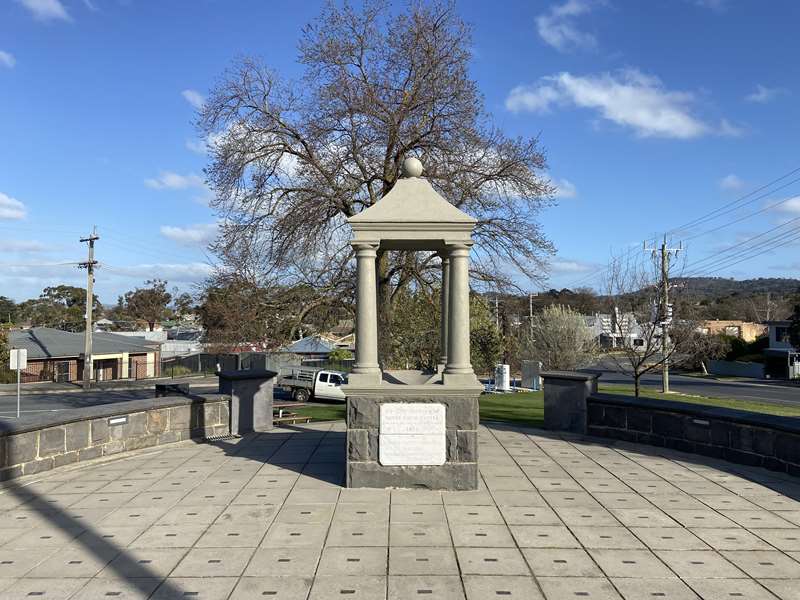
This site is also known as The Edith Cavell Reserve where a memorial was erected to the English-born nurse executed in 1915 for assisting the escape of Allied prisoners from the Germans. Each Anzac Day a nurse lays a wreath in her memory. The monument was dedicated in 1931 with money raised by Ararat 800 Primary School Mother's Club. The site is the oldest and most historic part of Ararat, as being on high and dry land it was the natural focus for the observations of the Police and Gold Warden.
2. Court House Hotel
84 Barkly Street

The Court House Hotel was one of Ararat's first hotels, built approximately 1858/9 and by 1862 had 5 rooms. It was constructed of wood and iron and once boasted a spacious ballroom and supper room which doubled as a billiard room. It is one of the oldest surviving hotels, named for its direct association with the police camp/station opposite. The hotel has suffered the usual changes for a building of its type. However, it remains in good condition with a good degree of integrity.
3. Cannons Store
88 Barkly Street
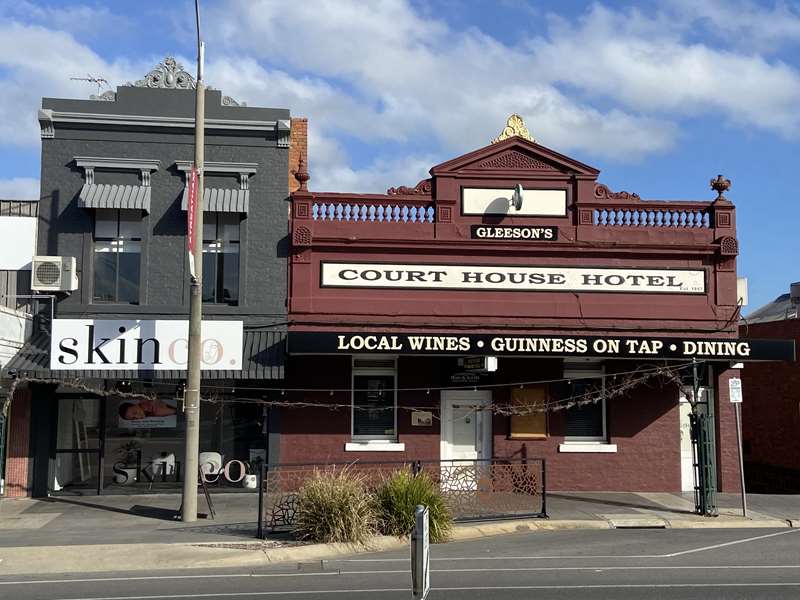
In 1857 John E. Dobson had a stationer/newsagent's shop and circulating library here in a one storey wood and canvas shed. From 1859 John Cannon continued the business for nearly 50 years, first in a 2 storied wood building and then in the present building, erected in 1877. The building has served a variety of purposes, including a steam laundry and the local registrar of births, deaths and marriages. The building is conventional with ground floor store and residential accommodation above and is of Renaissance Revival Style.
4. Briggs Francis & Associates
94 Barkly Street
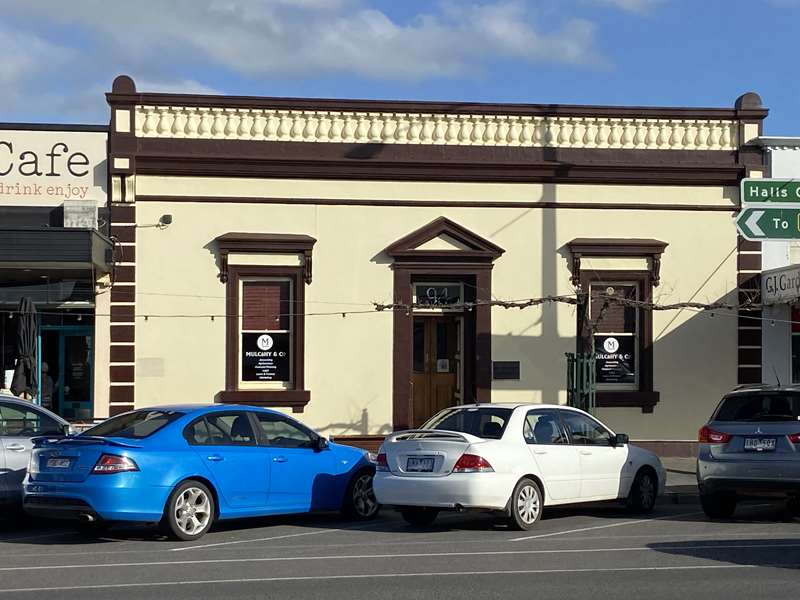
The original owner of this building was Dr James Galbraith, who erected the building in 1864. This building served continuously as a surgery and home for a succession of medical practitioners until 1906. Subsequently it was adapted to a number of purposes and now houses the firm of Solicitors Briggs Francis & Associates. The building is simple but refined, an example of the Renaissance Revival style. It is one of the oldest permanent buildings in Ararat.
5. Vine Tree Store (Sportspower)
104-106 Barkly Street
In September 1874, Council formally granted Mr. Grano permission to plant a 'Black Hambro' grape vine on the verandah in front of his mixed business of groceries, hardware, wines and spirits. The vine cutting is thought to have been given to him by the Henty family of Portland. The Vine Street Store(s)' operated under various owners. The vine still thrives today. Cuttings have been taken and these now grow along the verandahs in the Central Business District.
6. Bull and Mouth Stables
This significant bluestone building in the South Right of Way (Banksia Street) was renowned for its form, use of bluestone and quality construction. It was erected in 1866 as stabling for one of Ararat's most prominent early hotels and was described at the time as "one of the finest in the country". Partially destroyed by fire in 1867, the stables were rebuilt within the existing bluestone walls.
7. Tuson's Camp Hotel (Ararat Hotel)
130 Barkly Street
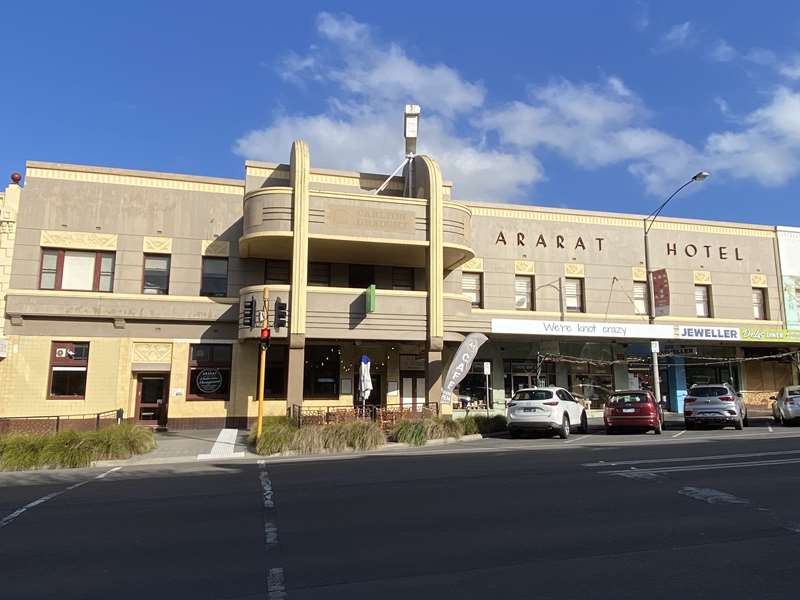
The Ararat Hotel started its life in 1857 as Gower's Camp Hotel. It then became Tuson's Camp Hotel and later Tuson's Ararat Hotel. It has remained an imposing building throughout its existence, undergoing periodic improvements to move with the times. The Ararat Hotel was completely rebuilt in 1940 to meet a growing demand for a higher standard of accommodation. The two-storied complex comprises bars, foyer and staircase, kitchen and dining room and several shops at ground level. Accommodation and lounges are on the first floor. The size and scale of the porch and the hotel make it one of the most important landmarks in Ararat. Cobb & Co stables were at the rear of the Ararat Hotel.
8. Hidden Secrets
132 Barkly Street
These premises were probably built in the late 1870s or early 1880s by James Tuson, the owner of the Ararat hotel. From the early 1880s until after World War II it functioned continuously as the shop and home of a succession of bakers, including the McCubbin family who owned it for decades. This building has an unusually fine first floor with tall pediment window surrounds with rare surviving timber blind hoods for external venetian blinds and unusual details on the parapet.
9. Blizzards
156-158 Barkly Street
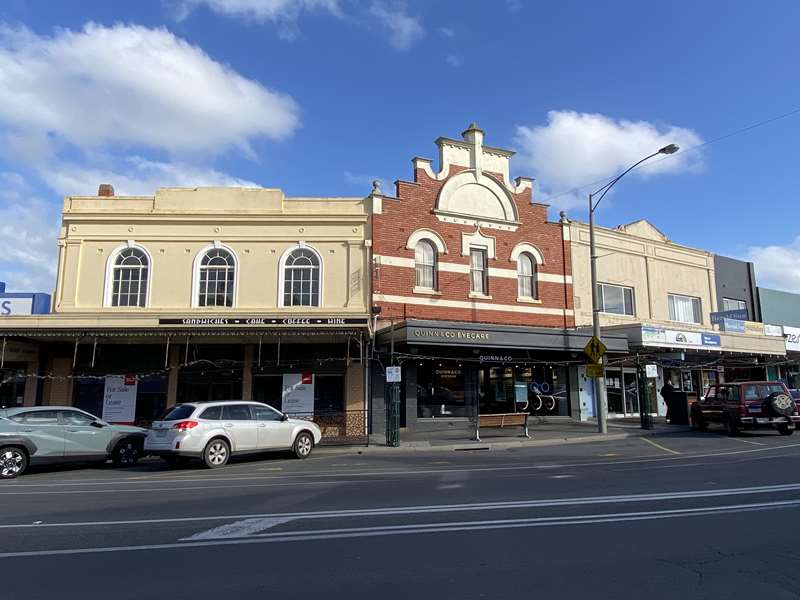
This striking building was designed by James Irwin and built in 1914-15 for Hannah Edwards, wife of R. Edwards, the boot maker, who owned several shops in Barkly Street. It is two storied and, typically for the period, uses red brick with cement render bands and details. The stepped gable is unusual and may have Dutch or South African origins, an echo of the Boer War. There is a dramatic blind arch motif. The first floor windows have alternate square and arched tops. The shop front is intact but the original verandah has been removed.
10. R Edwards Boot Emporium
174 Barkly Street
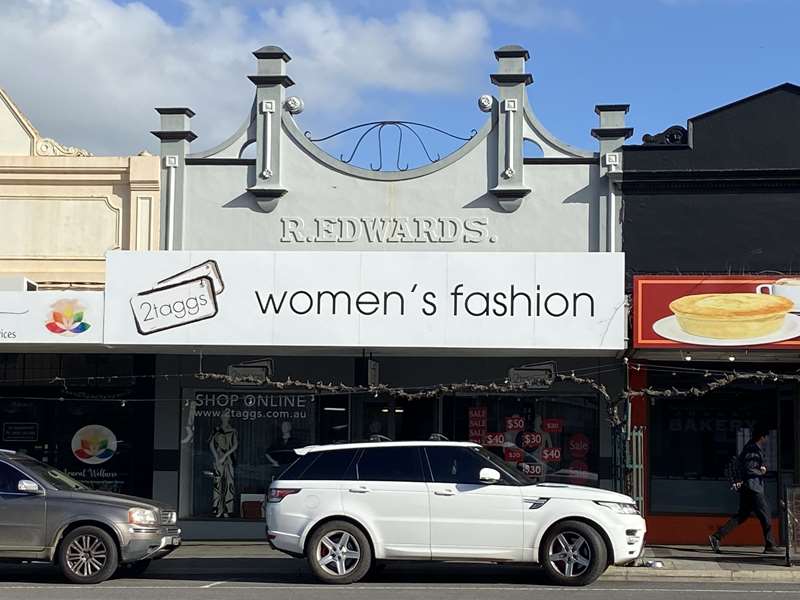
In 1918 boot-maker Robert Edwards moved into the existing premises on this site. In May 1919 he invited tenders for the erection of a new double fronted brick shop with parapet in the Art Nouveau style. The architect was James Irwin, who was Mayor of Ararat at the time. Mayor Irwin also designed the Mechanics' Institute building opposite.
11. Grano and McCarthy
178 Barkly Street
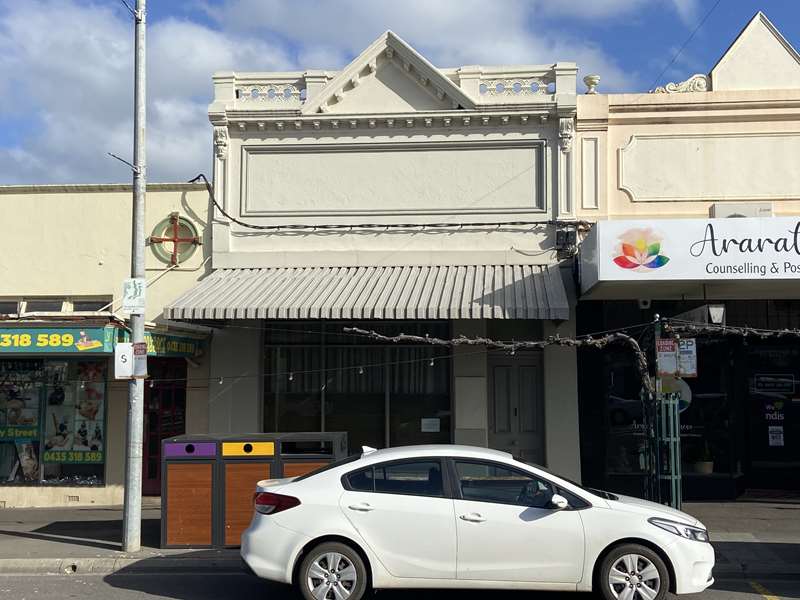
This shop was built in 1897 and designed by architect Michael Ryan for printers FJ & M Murphy who established the Ararat Chronicle, rival of the Ararat Advertiser. The building is of regional historical significance as the office of the defunct Ararat Chronicle and for its association with Patricia Grano, third generation of the important pioneering family and Ararat's first female barrister and solicitor. It is noteworthy architecturally for its use of the Renaissance Revival style.
12. John Dunn Funeral Director (Sally Hinchliffe & Associates)
210 Barkly Street
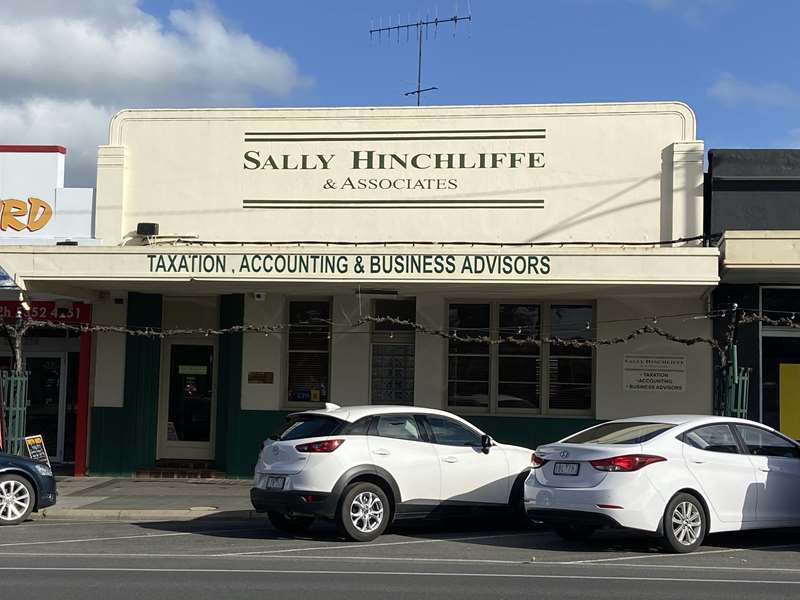
Although these premises were not built until 1913 the undertakers' business formerly conducted here was established by Thomas Lymer in 1857. The business was passed to the Dunn family through marriage in 1890. The premises were modernized in 1940 and the facade and entrance were redesigned but they represent an unbroken link with the past. The building is a sober but well detailed example of the Art Deco style more usually associated with glamorous buildings such as cinemas.
13. State Savings Bank
224 Barkly Street
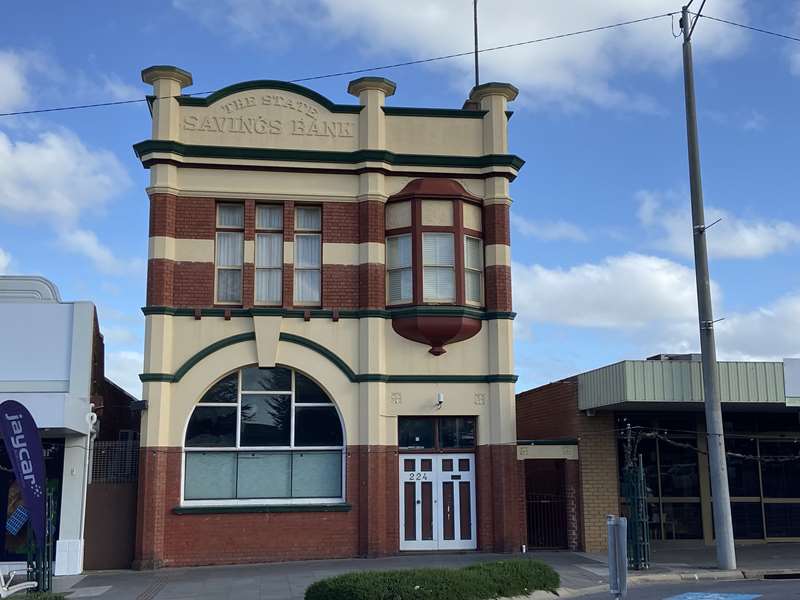
Designed by P. S. Stephens and built by J. S Stephenson of Ararat, the Bank operated from these premises from 1912 until 1962 when it moved to a new building at 110 Barkly St. The building continued to be used as the manager's residence until 1969. Architecturally, it represents a mixture of styles. The oriel window owes its inclusion to the Queen Anne style and the large semi-circular window to the Romanesque Revival.
14. Shire Hall Hotel
240 Barkly Street
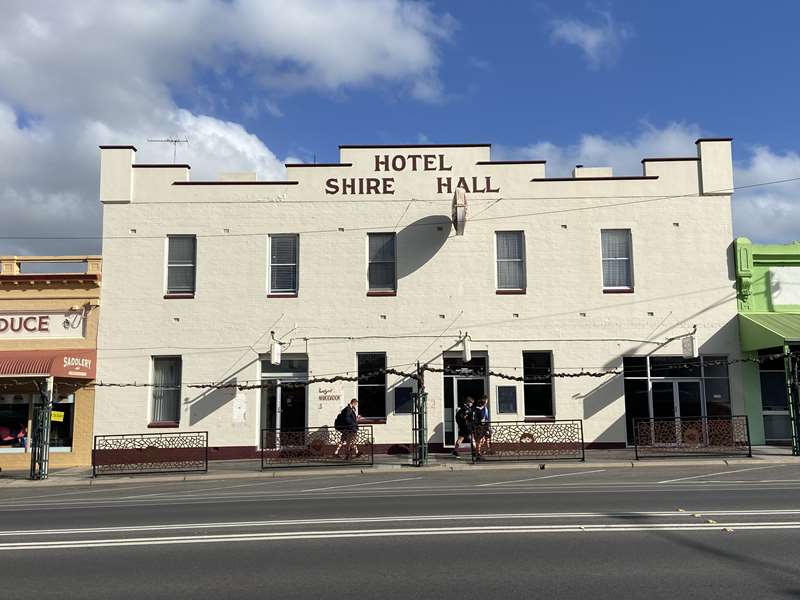
The hotel began life in 1860 as a grocery and was used by the owner, Samuel Laundry, as his home and workplace until 1875. It was then converted into a hotel by his brother Henry in order to take advantage of its close proximity to the Shire Hall and the advent of the railway. The hotel was completely rebuilt by the Ballarat Brewing Co. in 1925 with L. Cashin the licensee. Lawrence, Bridget and son Lawrence purchased the premises in 1957. The building remains much the same, apart from the loss of its verandah.
15. Caroll's Saddlery & Produce
244 Barkly Street
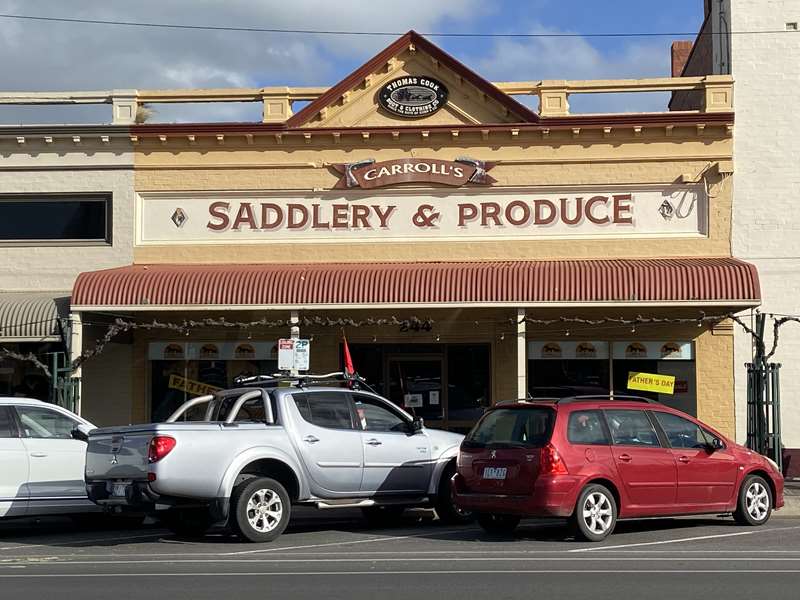
This building with its separated interior was once stables for the Shire Hall Hotel and later became a foundry. It also housed Deans' Cordial Manufacturers and with the advent of motor vehicles became a garage. Note the original facade above the verandah.
16. Midland Theatre (Astor Cinema)
250 Barkly Street
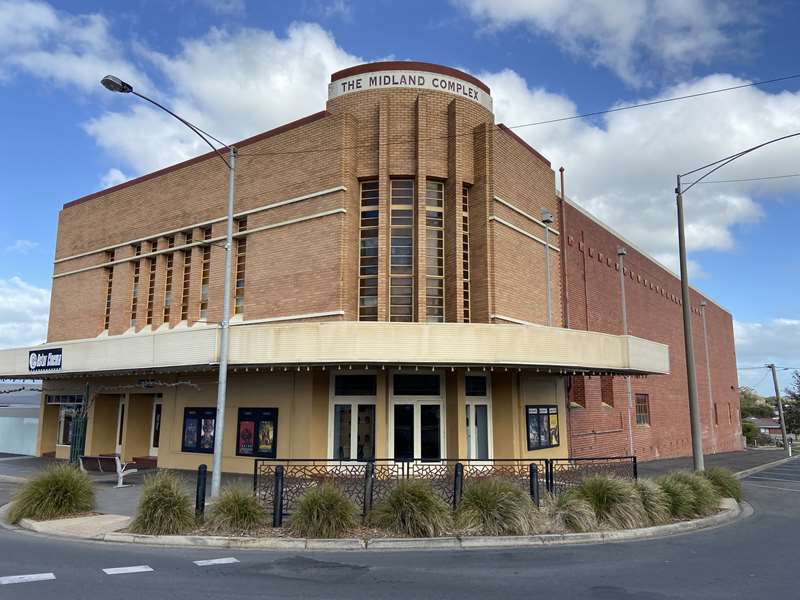
Completed in 1938, the cinema was one of the largest purpose-built cinemas in rural Victoria. It was designed by architect Rhys Hopkins in the Moderne style to hold 1000 patrons and built by Otto Spehr and J. Friedman. A stage for theatrical productions was included, but was little used. Internal decoration is minimal, in keeping with the Moderne style. The cinema was closed after the advent of television, but reopened in 1959. It has since been remodelled internally to accommodate an additional two cinemas within the former dress circle and upper foyer.
17. Catholic Church Precinct
302 Barkly Street (Brigidine Convent of the Sacred Heart)

Marian College was founded in 1888 by the Brigidine Sisters from Ireland. The first part of the convent was built in 1899 in the Collegiate Gothic style by Michael Ryan. The completion of the second part, including the facade, was celebrated in 1900. By that time the convent housed 22 nuns who conducted classes from early primary to matriculation standard. The Brigidine convent is typical of the convents and schools built in metropolitan Melbourne and rural Victoria at the end of the 19th and early 20th century.
304A Barkly Street (Catholic Presbytery)
In 1871 the plans of the Presbytery were prepared by Michael Ryan in the style of the Italian villa and adapted to the climate and position of the ground. Note the wide verandah shades three sides of the building.
304 Barkly Street (Immaculate Conception RC Church)
The Catholic community held services in a temporary chapel/school building from 1857 on this site. The first bluestone church was completed in 1864, extended and improved over time until being demolished to make way for the present building which was designed by A.A. Fritsch. The Romanesque Revival style may be a conscious return to the style of the early Christian basilicas. The church is deliberately simple and traditional in form and plan. Its use of bluestone is also traditional and probably marks the last period it would be used.
18. Dominica House
291 Barkly Street
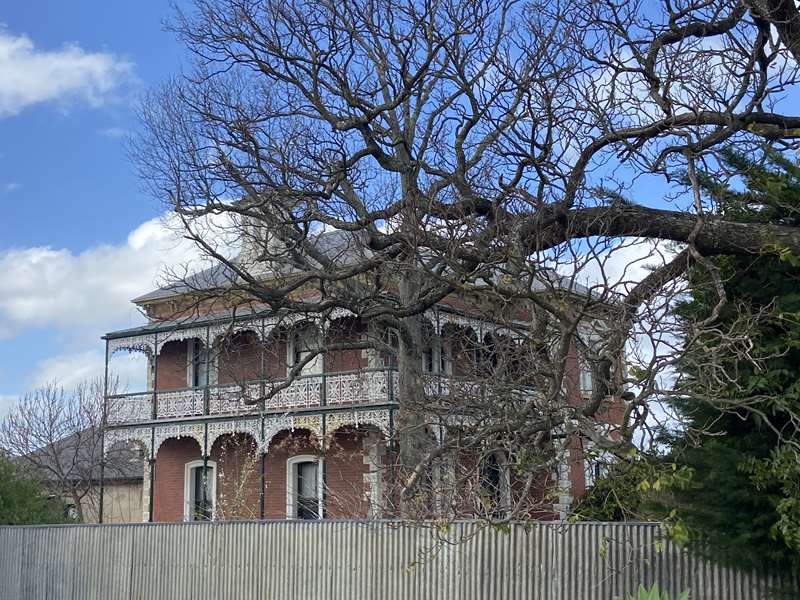
Dominica was the first two-story building in Ararat erected for purely residential purposes. It was built in 1899 for Theo Grano, son of the founder of the Vine Tree Store. He had two families. The names of his thirteen children were incised into the quoins flanking the two entrances, where they can still be seen. It is supported by an intact Interwar garden surrounded by a magnificent cypress hedge. It remains in excellent condition and stayed in the Grano family until a few years ago. It remains a private residence.
19. George Hotel (Blue Duck)
257 Barkly Street

The earliest licensee discovered so far was Augustus Peoppel who ran the hotel from 1877. The licensee during the First World War referred to it as "a blue duck." The term originates from mining when a gold mine which had run out of gold was known as "a blue duck." During the First World War when men deserted the area to join up, the hotel was understandably short of patrons and income, and was therefore referred to as, "a blue duck."
20. Langi Morgala Museum
48 Queen Street
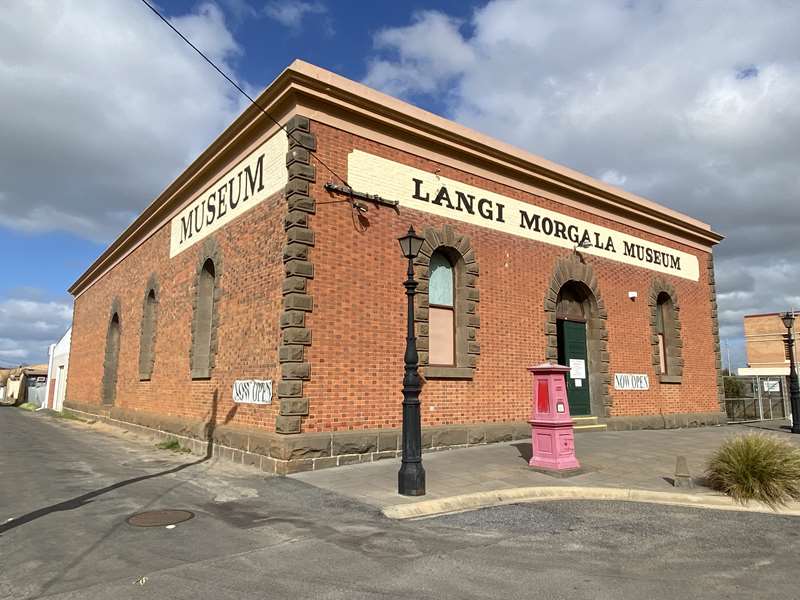
Aboriginal name meaning, "Home of Yesterday". This was built in 1874 for Michael Byrne Carroll as a wheat and wool store. Later, Dodd & Hargreaves took over the building as wool brokers and agents. During the Second World War it was used by the army to manufacture parachutes and store emergency canned food. In April 1962 the Ararat & District Historical Society acquired the building. lt houses displays depicting the history of Ararat with aboriginal artefacts donated by the family of Mr L.J. Mooney in 1956 and by Mr H.C Best amongst others from the district.
21. Ararat Civic Precinct
a. Shire Hall
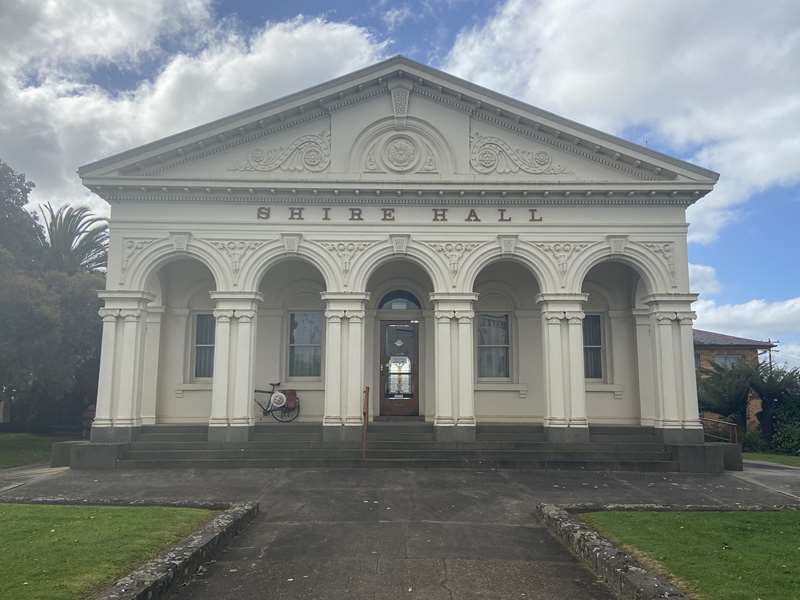
The Shire Hall was built in 1871 by Architect & Shire Engineer, Alexander White. White produced a building of excellence and quality that expresses the Shire's pride in itself and confidence it had in the future. It stands as arguably one of Ararat's most distinguished buildings. The fence and brick wall were added in 1872, with the casting coming from William Blomely's foundry in Ballarat. The building houses the WW1 Honour Board and a beautiful stained glass window honours the fallen.
b. Cenotaph
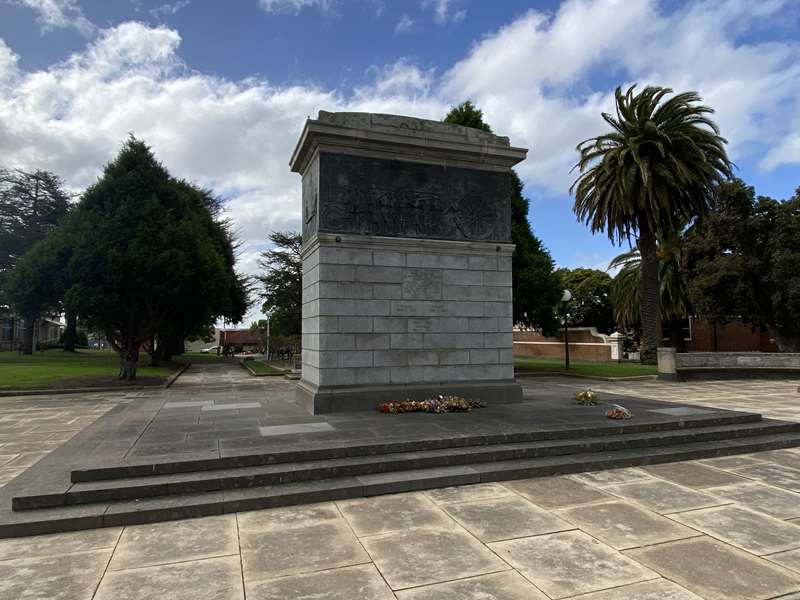
The architects deliberately modelled this structure on Sir Edward Lutyens' Cenotaph in Whitehall, London. The monument was dedicated in 1930 to those who served Australia in various conflicts and in memory of those who died. Two circular seats in Grampians stone have bronze panels commemorating events in World War II. Reliefs show Simpson and his donkey, the work of the Army Medical Corps, the Light Horse and troops going up to the line. The bronze plaques were sculpted by Wallace Anderson and cast in Melbourne.
c. Town Hall
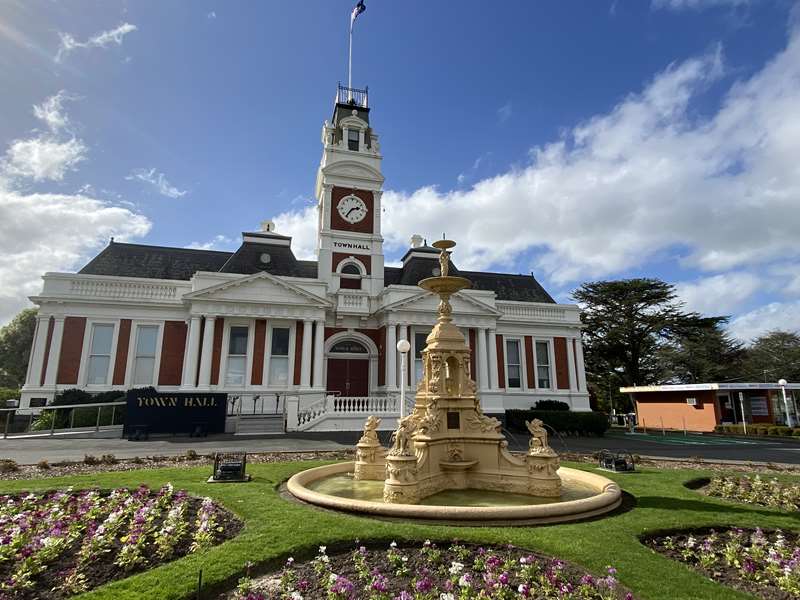
Converted Market sheds served Ararat as a Town Hall in the late 1860s and were later demolished to make way for the new Town Hall. This was designed by Molloy and Smith of Ballarat and built in 1899 by James Irwin, who later became mayor on three occasions and gave civic leadership for thirty years. The Clock tower and other external features are largely unaltered but internal alterations have been made to accommodate an Art Gallery. The building is a typical example of Municipal architecture and uses the Roman Revival style.
d. Ararat Boer War Memorial Fountain
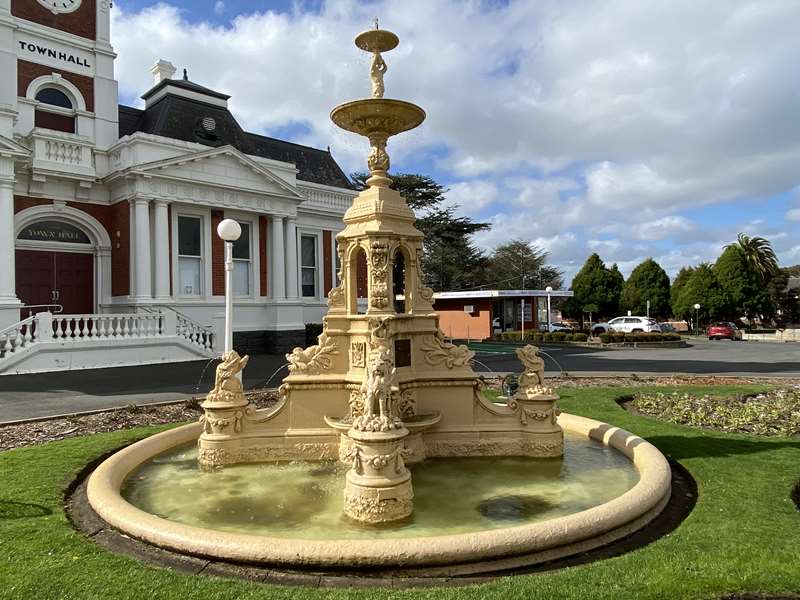
The fountain was planned to mark Queen Victoria's diamond jubilee, but it was suggested that it should also commemorate those of Ararat's volunteers who fought in the Boer War. Ararat had sent twenty-one volunteers and survivors received gold medals from fellow citizens. When the mayor interrupted the opening ceremony for the new Town Hall in 1899 to read a telegram giving news of a British victory in the war, the audience broke into 'Rule Brittania.' The fountain was apparently obtained readymade from a Melbourne firm for between 100 and 125 pounds.
e. Memorial Drinking Fountain
It was decided at a public meeting in 1936 to erect a memorial drinking fountain dedicated to the late King George V in the Town Hall square. The tender was given to G H Robson of Stawell at 144.15 pounds and the fountain was erected in July 1937.
22. Commercial Hotel
191 Barkly Street
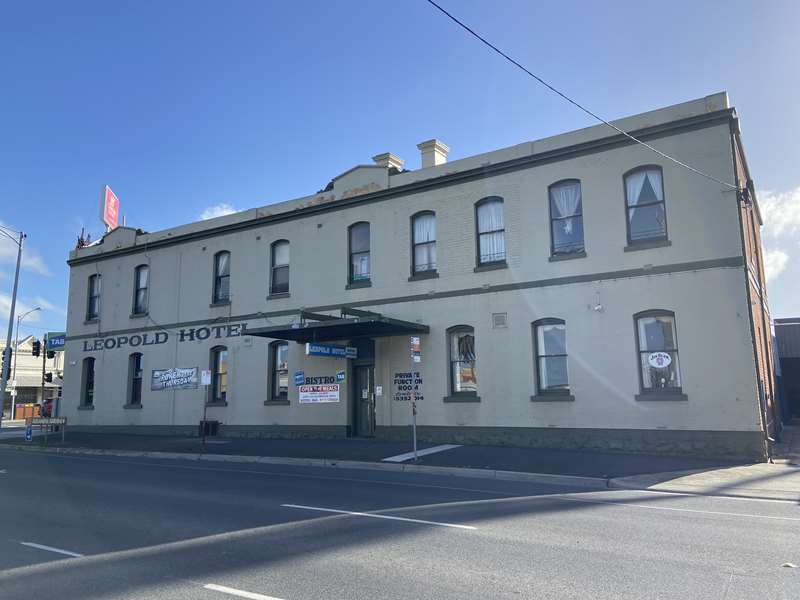
This site has been continually occupied by a hotel since 1858. By 1868 there was a structure of 13 rooms. The tenders for the current building were called in 1874 and although soon in use it was not completed until 1903. The Leopold family owned the hotel for over half a century and in the 1920s it was briefly owned by W.A Claringbold of Commercial House. It once had a magnificent cast iron lace verandah, removed in the 1960s. In its heyday the hotel boasted Vice Regal patronage.
23. Mechanics' Institute
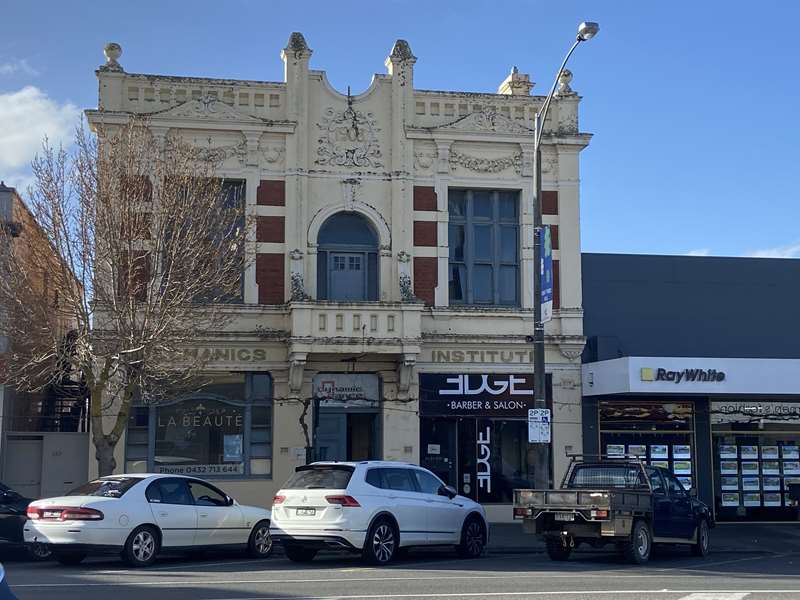
What was once the site of the Great Eastern Hotel, is now the two storey Mechanics' Institute rebuilt in 1909. Designed by James Irwin and built by Mr. Bulte, this building is of particular interest as one of the last to be built and one of the few in the style current in the Federation period. Typical of such buildings it has rooms either side of the central entrance, leading to a large hall and reading room at the rear. In 1878 a report stated The upper story comprises of a large hall used for meetings. The lower storey is the reading room, the smoking, conversation and chess rooms, a committee room and library together with the secretary/librarian quarters.
The Institutes promoted what today we would call "adult education" through lecture programs and a library of books, newspapers and journals from around the globe. The reading room was opened daily (Sunday excepted) from 9am to 10pm.
24. McGibbony Building
161 Barkly Street
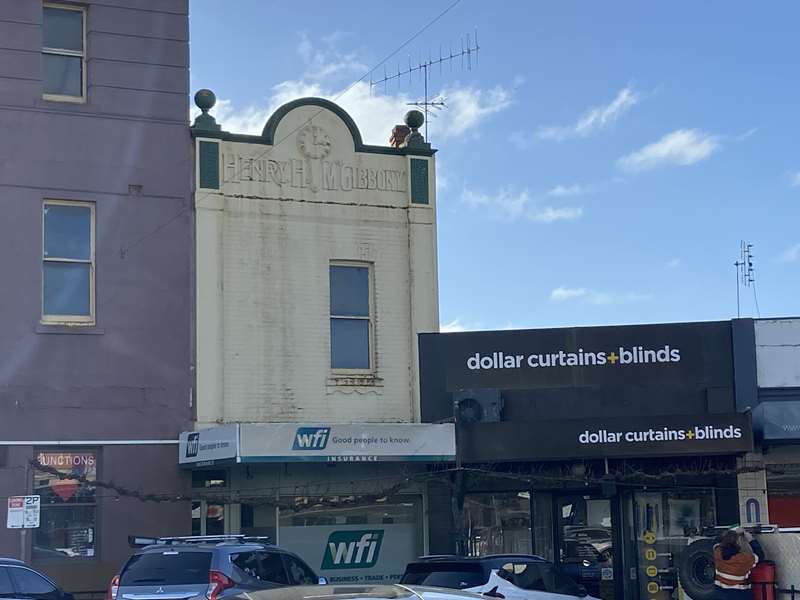
Bought by John McGibbony at the first government land sale in 1858 this site was where he established his watchmaker and jewellery business in a calico and wooden building. In 1865 he replaced this with a two storey red brick building, including a residence for his family, displaying details typical of the Federation period. Restored in 1870 after a fire and remodelled about 1910, the clock face can still be seen on the parapet and bears the name of his son Henry McGibbony.
25. Turf Hotel
157-159 Barkly Street
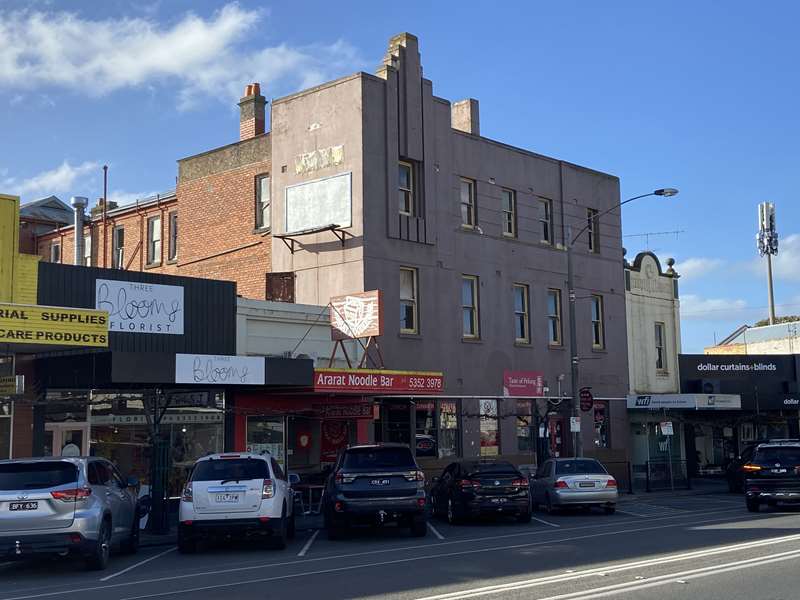
The site appears to have functioned as a hotel in the 1850s, but the present building dates from 1911 when it was graced by a cast iron and timber verandah. In 1921 it was one of the first hotels to replace its stables with garaging for cars. At three storeys, it was the tallest building in Ararat prior to World War II. Remodelling occurred in the 1930s. The building incorporates Art Deco and Moderne styling.
26. Rex Hotel currently the Central Hotel
129-131 Barkly Street
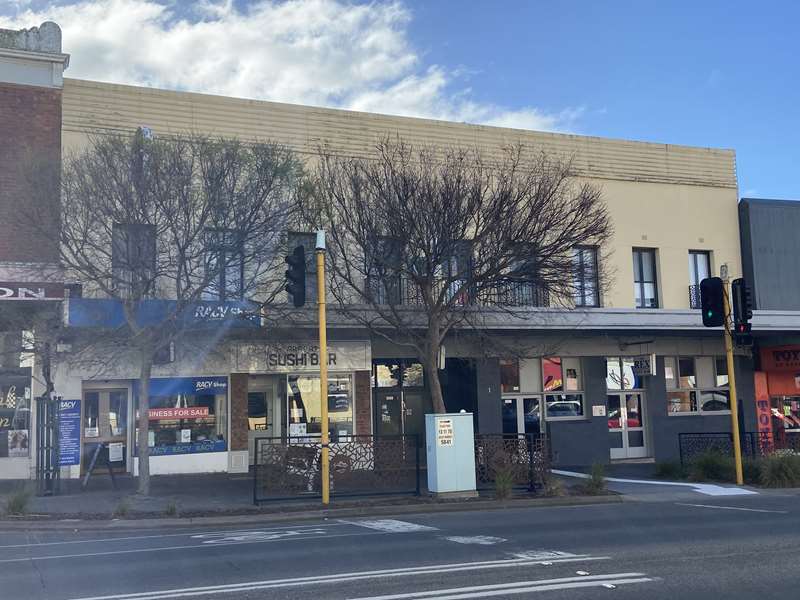
Originally the site of the Manchester Hotel built in 1858 and destroyed by fire in 1870, the owner Robert Scott and his neighbours united to rebuild after the fire, giving four premises a similar Renaissance Revival design. The present facade dates from 1954 and is a post war interpretation of classical architecture with a Moderne twist. The rear of the building has not seen as many alterations and is closer to the early periods of its development.
27. Shamrock Hotel
119-121 Barkly Street
The hotel once stood next door to the Rex Hotel on the site now occupied by a pharmacy. The building was destroyed by the fire of 1870 and rebuilt by the draper James Chadwick as three separate shops with rooms above. The first floor is considered unusual, with very tall windows and an "attic" storey incorporating roundel windows. The site has been occupied by a number of pharmacies, including that of T.A. Wild, who invented the preserving sauce known as Ezy-Sauce.
28. London Chartered Bank (ANZ)
107 Barkly Street
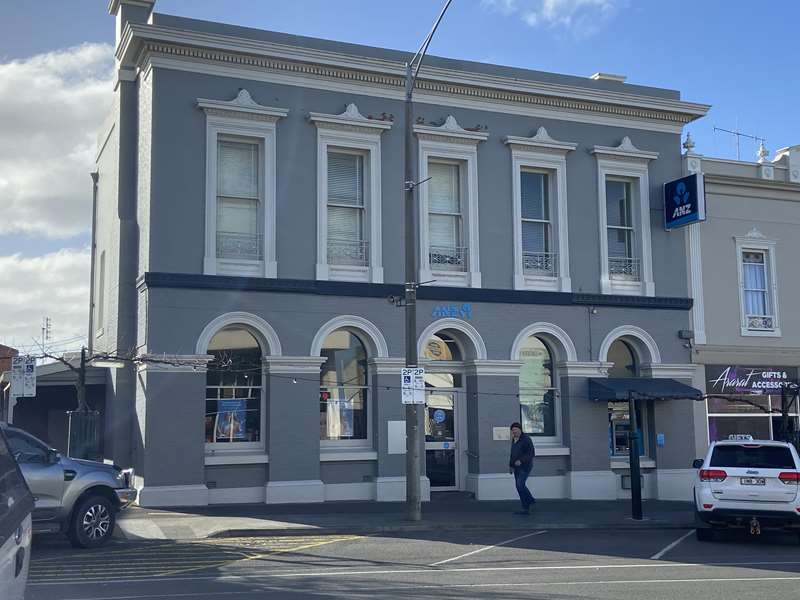
One of the first banks on the Ararat goldfield, the present building was not built until 1868, eleven years after the start of the gold rush. It was designed by the leading Melbourne architect Leonard Terry, who designed many banks in Victoria. The premises contained a spacious and well appointed residence upstairs with the latest amenities for the manager. The building uses the conservative Renaissance Revival style that evoked the stability and security sought by the bank's clients. The most serious change is the painting of the exterior brickwork.
29. Bank of New South Wales
95 Barkly Street
This was the first bank on the goldfields in 1857, when Mr. W. J. M. Larnach was Manager. His bank was a tent and his equipment consisted of dogs, a gun and strong boxes. The Bank of New South Wales next banking site is now currently the site of the Westpac Bank at 95 Barkly Street. Many of the internal glass panels inside the Bank have been etched with text and images reflecting our history. One such door panel depicts a Chinese image utilising the Westpac symbol.
30. The Old Fire Station (Post Office)
93 Barkly Street
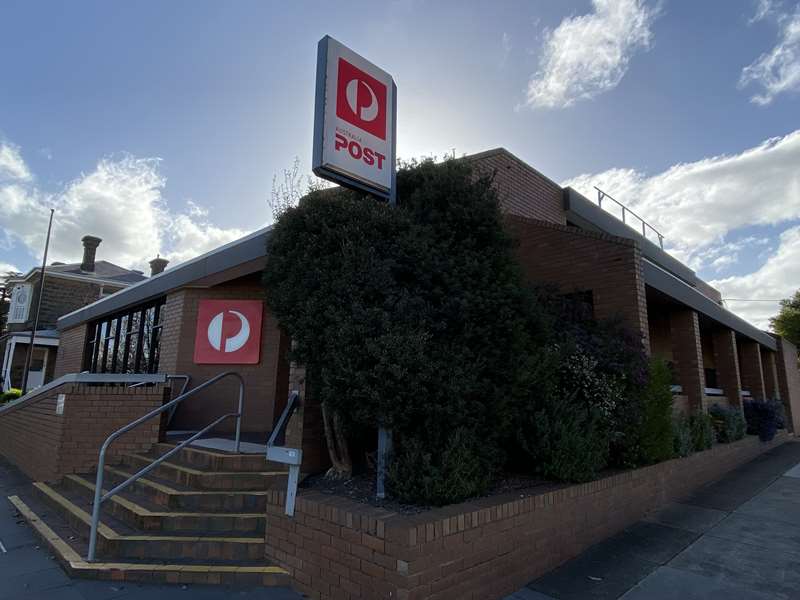
The old Fire Station stood on the corner of Barkly St and Stawell Rd, now Ingor St, from 1875/76 - 1970. The observation platform was originally built with six levels, but was reduced in height as the bell's vibration was found to be weakening the brick structure. The site is now the home of Ararat's current Post Office.
31. Vindel House (Post Office & Sub-Treasury)
90-93 Barkly Street
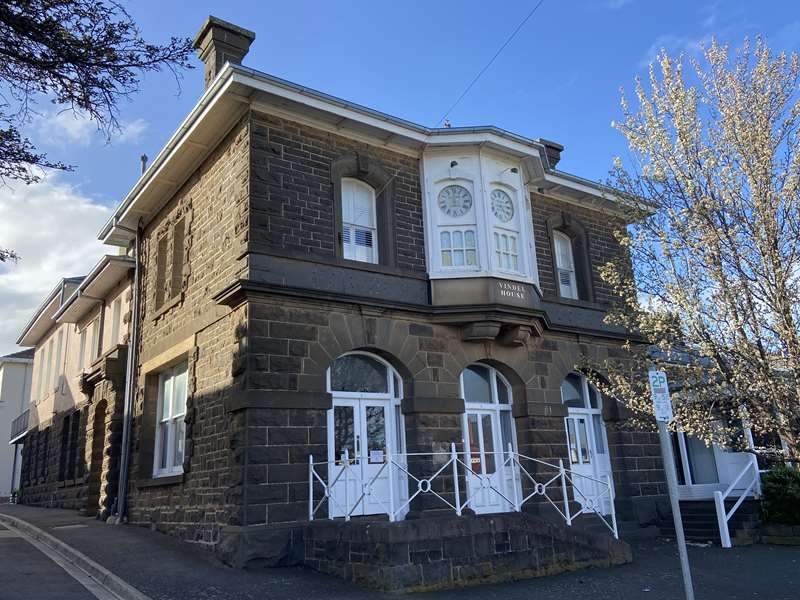
Vindel House was constructed in two separate parts. The Sub-Treasury and Assay office was the first section and was constructed in 1858. The Post Office was not attached until 1862, replacing an earlier portable wooden building near the town square. The simple Italianate design of the Post Office with its Palladian influence reflects the sophistication of leading English architect, William Wardell. This building, the third major bluestone building in Ararat, is still in excellent condition although it has undergone significant interior alterations in the twentieth century. The three dial clock in the oriel bay window was installed in 1890.
32. Police Station
77-89 Barkly Street
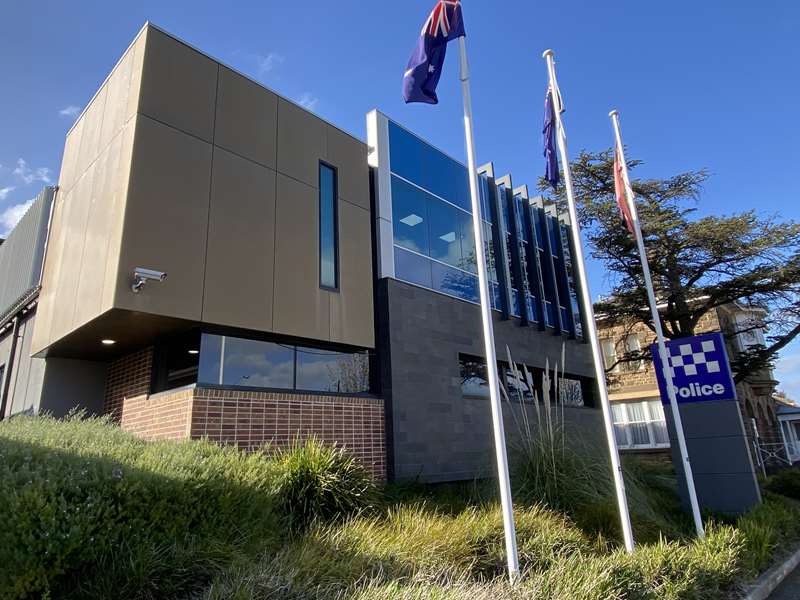
The previous Police Station used the Georgian Revival style to domesticate the function of the building. This is in contrast to other contemporary police stations which adopted more Moderne and adventurous styles. It was compared with the Stripped Classicism of the former Commonwealth Bank at 113 Barkly Street. The building was stripped of detail, which reflected the austerity of the time of its construction during World War II. Staff moved into the building in May 1954. The current Police Station was completed in 2010.
33. Court House
Corner of Barkly Street and Ligar Street

Ararat Court House is historically significant as a Court of Mines, established in 1857. It operated from a temporary wooden building until 1859, when Ararat was declared a General Sessions District and a basalt court house was erected. Completed in 1866-67, Ararat Court House was a small, symmetrical brick building designed by architect Gustav Joachim in the Victorian Free Classical style with a recessed entry and gabled roof. This court house was succeeded by the present building which reflects Ararat's status as a site for Supreme Court sittings until 1909.
34. Ararat Advertiser
3 Ligar Street
The Ararat Advertiser was founded by Jabez Walter Banfield with partner J. Nuthall in August 1857 soon after the discovery of gold and was first published in a tent. The building is said to be the first brick building in Ararat and as such has regional significance, but it has been altered over the years. Next to it are two houses: 5 Ligar Street built in 1873 for the proprietor, and 7 Ligar Street, built for Miss Lorna Banfield, author of "Like the Ark" and "Green Pastures and Gold", the history books of early Ararat.
Photos:
Location
Cnr Barkly Street and View Point Street, Ararat 3377 View Map









